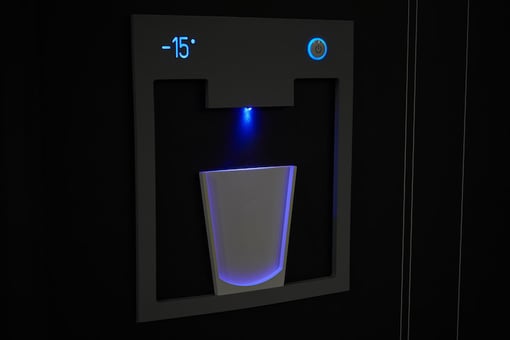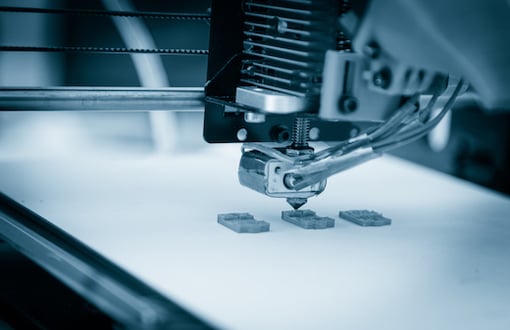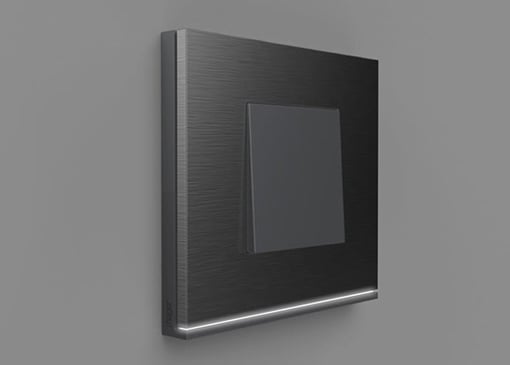
Lighting solutions: SLIM gives light to new ideas to face the market's needs
Over the years, SLIM's research and development department has specialised in the development of customised products. The aim is to be able to meet the specific needs of each customer and satisfy the demands of an increasingly demanding market. This involves tailor-made lighting solutions that can be integrated into the final application to give added value to the product.
SLIM designs and develops innovative customised lighting solutions for customers in a variety of application areas: from the production of domestic and professional appliances to backlighting technology, from the HO.RE.CA industry to HVAC, from the electro-medical sector to some areas of the automotive industry.
The know-how and professionalism of the R&D technical department is available to customers for the most varied projects. Lighting for poker tables, pushchairs, slicers, hobs and coffee machines are just some of the projects that have been put on the table over the years.
If you would like to learn more about the partnerships that have resulted in customised lighting solutions, click on the button below and download the SLIM success stories document.
Custom solutions: what do they consist of?
SLIM's mission consists in "grasping, interpreting and satisfying the target’s requirements, accompanying the development of the customer's ideas with our lighting solutions". SLIM specialises in the design of customised lighting solutions, created to meet specific functional and aesthetic requirements highlighted by the customer. When we refer to customised lighting solutions, we are referring to luminous devices that are incorporated as components in more complex products.
Here, the customer places a specific demand on SLIM in terms of: type of light, luminous intensity, aesthetic performance, working space and other industry and application characteristics. For example, one case is the professional coffee machine, where the lighting solution could be in direct contact with high temperatures and liquid substances, some of which are corrosive.
The in-house R&D department takes care of collecting and formalising the customer's initial requirements, understanding their technical and aesthetic needs, and then developing various proposals. The process of creating a customised solution requires study, skill and patience. The initial idea may change several times during the project before the necessary components are finally defined or the best lighting solution is developed.

The development phases: from design to prototype
From the phase of taking on the task to the realisation of the final product, the road can be long and bumpy because requirements can mature or change over time, just as the design of the final application in which the solution will be housed can evolve.
The process of creating a customised solution tends to consist of a number of fundamental steps. Once the customer's needs have been identified, a real project development process begins, made up of various phases.
The design of SLIM initially foresees the realisation of some graphic proposals of the product concept. It starts with the study and selection of materials on the basis of the shape of the project and its feasibility, then moves on to the search for the right brightness, until reaching the detail that makes the creation of the signalling light unique.
From a constant exchange of information and continuous consultation with the customer's design team, proposals are selected for which a 3D prototype is produced.

3D prototyping is essential to check the "in situ" application of the lighting component. This gives the customer the opportunity to touch the prototype of the product and incorporate it into the final application. This gives the customer the opportunity to carry out all the necessary tests: of space, of light output compared to the product as a whole, of resistance to high or low temperatures, of easy and rapid insertion. The advantage of this phase is that it allows the customer to have prototypes that are as identical as possible to the finished product, obtained by mass production. Consequently, there is no need to invest in equipment that would have to be replaced in the event of subsequent changes to the solution. In fact, this way the customer will achieve cost optimisation for any necessary tooling, be it moulds for the plastic parts or programmes for creating PCBs, because it will be implemented immediately and successfully once approval has been given for the final prototype.
SLIM's support
Commitment and creative capacity, attention to detail and care for quality are just some of the distinctive aspects of SLIM, as one of the latest case studies shows. The customer who decides to rely on SLIM, for the creation of a cutting-edge custom project, will find a dedicated team of experts, able to accept and make their requests their own by developing innovative "light" signalling solutions.
The offer of components suitable for multiple industries is a key asset for the company, as it allows the development of heterogeneous lighting solutions. Among the most successful collaborations are: the solution for a designer civil switch by Hager and the backlighting of the knobs on Ilve's Panoramagic ovens and hobs.

The continuous search for the ideal solution for a specific product and the proactive collaboration between the companies consolidates and strengthens the relationship between SLIM and its customers. This builds loyalty, which is the ultimate goal for the current project and the starting point for the development of future successful partnerships.
Are you looking for a customised lighting solution? Click on the button below and put us to the test with a challenging request for state-of-the-art light signalling!